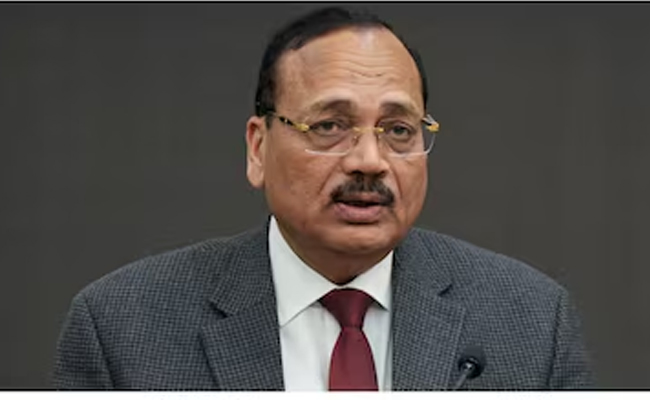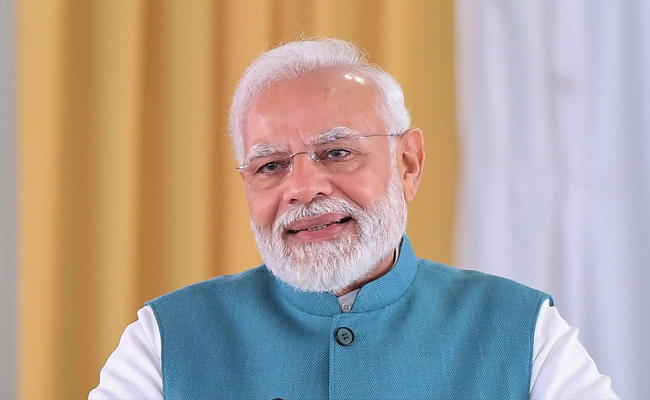New Delhi: The Kasaragod to Trivandrum train is the best-performing Vande Bharat Express with an average occupancy of 183 per cent among the 23 pairs of such trains running across the Railway network, according to official data.
The Vande Bharat Express between Trivandrum and Kasaragod in Kerala, with an average occupancy of 176 per cent is the next best-performing train, followed by the Gandhinagar-Mumbai Central Vande Bharat Express with an average occupancy of 134 per cent.
On February 15, 2019, Prime Minister Narendra Modi flagged off the first Vande Bharat Express between New Delhi and Varanasi, Uttar Pradesh which was manufactured indigenously at the Integral Coach Factory, Chennai.
So far, 46 Vande Bharat Express services have reached all rail-electrified states of the country. Encompassing a total of 24 states and Union Territories, the Vande Bharat Express fleet has been ever-growing owing to its time-saving feature, which saves an average of an hour in comparison to other trains.
With a maximum permissible speed of up to 160 kmph, it provides faster acceleration. The Vande Bharat Express is the fastest passenger train on the routes it is running on.
Also read: Bank account holder in Mangaluru duped of Rs. 44,500 under pretext of KYC updation
The trains with top occupancy include the Mumbai Central-Gandhinagar Vande Bharat Express (129 per cent), Varanasi-New Delhi Vande Bharat Express (128 per cent), New Delhi-Varanasi Vande Bharat Express (124 per cent), Dehradun-Amritsar Vande Bharat Express (105 per cent), Mumbai-Sholapur Vande Bharat Express (111 per cent), Sholapur-Mumbai Vande Bharat Express (104 per cent).
In the eastern region, the Howrah-Jalpaiguri Vande Bharat Express has an average occupancy of 108 per cent and on the return journey, it has recorded an occupancy of 103 per cent. The Patna-Ranchi Vande Bharat Express has an occupancy of 125 per cent, while on its return journey, it has an occupancy of 127 per cent.
Among the trains that need a leg up in occupancy is the Ajmer to Delhi Cantonment Vande Bharat Express (60 per cent) and the Delhi Cantonment to Ajmer train (83 per cent).
Also Read: Anand K takes charge as Dakshina Kannada ZP CEO
So far the train has made 2,140 trips, and 25,20,370 net passengers have boarded the Vande Bharat Express from April 1, 2022, to June 21, 2023.
Union Finance Minister Nirmala Sitharaman on February 1, 2022, during her budget speech announced that 400 new-generation Vande Bharat trains with better energy efficiency and passenger riding experience will be developed and manufactured.
As of July 2022, a tender has been awarded for manufacturing 102 Vande Bharat trains and another tender has been floated for 200 Vande Bharat trains.
Let the Truth be known. If you read VB and like VB, please be a VB Supporter and Help us deliver the Truth to one and all.
Jaisalmer (PTI): Pushing for a "unified judicial policy", Chief Justice of India Surya Kant on Saturday said technology can help align standards and practices across courts, creating a "seamless experience" for citizens, regardless of their location.
He said high courts -- due to the federal structure -- have had their own practices and technological capacities, and "regional barriers" can be broken down with technology to create a more unified judicial ecosystem.
Delivering the keynote address at the West Zone Regional Conference in Jaisalmer, Kant proposed the idea of a "national judicial ecosystem" and called for an overhaul of India's judicial system with the integration of technology.
"Today, as technology reduces geographical barriers and enables convergence, it invites us to think of justice not as regional systems operating in parallel, but as one national ecosystem with shared standards, seamless interfaces, and coordinated goals," he said.
He emphasised how the role of technology in the judiciary has evolved over time.
"Technology is no longer merely an administrative convenience. It has evolved into a constitutional instrument that strengthens equality before the law, expands access to justice, and enhances institutional efficiency," he said, highlighting how digital tools can bridge gaps in the judicial system.
Kant pointed out that technology enables the judiciary to overcome the limitations of physical distance and bureaucratic hurdles.
"It allows the judiciary to transcend physical barriers and bureaucratic rigidities to deliver outcomes that are timely, transparent and principled," he said, adding that the effective use of technology can modernise the delivery of justice and make it more accessible to citizens across the country.
The CJI called for implementing a "unified judicial policy".
He said India's judicial system has long been shaped by its federal structure, and different high courts have their own practices and technological capacities.
"India's vast diversity has led to different high courts evolving their own practices, administrative priorities and technological capacities. This variation, though natural in a federal democracy, has resulted in uneven experiences for litigants across the country," he said.
Kant underscored that predictability is crucial for building trust in the judicial system.
"A core expectation citizens place upon the courts is predictability," he said, adding that citizens should not only expect fair treatment but also consistency in how cases are handled across the country.
He pointed to the potential of technology in improving predictability.
"Technology enables us to track systemic delays and make problems visible rather than concealed," he said.
By identifying areas where delays occur, such as in bail matters or cases involving certain types of disputes, courts can take targeted action to address these issues and improve efficiency, Kant said.
The CJI explained that data-driven tools could identify the reasons behind delays or bottlenecks, allowing for faster, more focused solutions.
"Technology enables prioritisation by flagging sensitive case categories, monitoring pendency in real time and ensuring transparent listing protocols," he said.
Justice Surya Kant also discussed the importance of prioritising urgent cases where delays could result in significant harm. He highlighted his recent administrative order that ensures urgent cases, such as bail petitions or habeas corpus cases, are listed within two days of curing defects.
"Where delay causes deep harm, the system must respond with urgency," he stated, explaining that technology can help courts identify and expedite such cases.
Kant also raised the issue of the clarity of judicial decisions.
He noted that many litigants, despite winning cases, often struggle to understand the terms of their judgment due to complex legal language.
"Although the orders had gone in their favour, they remained unsure of what relief they had actually secured because the language was too technical, vague or evasive to understand," he said.
He advocated for more uniformity in how judgments are written.
"A unified judicial approach must therefore extend to how we communicate outcomes," he said.
The CJI also discussed the role of AI and digital tools in improving case management. He pointed to the potential of AI-based research assistants and digital case management systems to streamline judicial processes.
"Emerging technological tools are now capable of performing once-unthinkable functions. They can highlight missing precedent references, cluster similar legal questions, and simplify factual narration," he said, explaining how these technologies can help judges make more consistent decisions.
He also highlighted tools like the National Judicial Data Grid and e-courts, which are already helping to standardise processes like case filings and tracking.
Kant reiterated that the integration of technology into the judicial process is not just about improving efficiency but about upholding the integrity of the system and strengthening public trust.
"The measure of innovation is not the complexity of the software we deploy, but the simplicity with which a citizen understands the outcome of their case and believes that justice has been served," he said.

_vb_60.jpeg)



